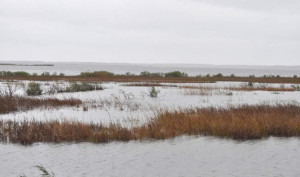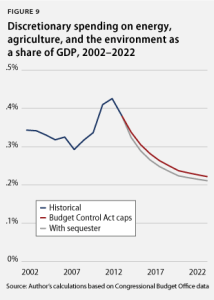We have much more to do and your continued support is needed now more than ever.
Does the Paul Ryan Budget Safeguard Americans?

The budget proposal says that the role of the federal government is to protect our communities and our families from “many dangers: rising health-care costs, a stagnant economy, a massive debt, an uncertain world,” and that “the first job of the federal government is to secure the safety of its citizens from threats at home and abroad.” We agree, and NWF works every day to better protect people, property, and the environment. However, NWF believes that certain policies outlined in Rep. Ryan’s budget proposal put Americans at greater risk.
Climate change and extreme weather impacts – wildfires, droughts, floods, superstorms, all of which are intensifying – are some of the greatest threats facing Americans today. According to the nonpartisan Government Accountability Office, continuing to ignore the impacts of climate change puts to federal government—and the country—at high risk of financial loss.
The budget plan focuses on aiding the vulnerable and their communities, yet this budget, by ignoring and potentially worsening the effects of climate change, puts millions of vulnerable Americans at risk. NWF agrees that we need to seek a balanced approach to deficit reduction; however, we cannot ignore the direct public health and safety impacts of a federal budget that turns a blind eye to the reality of climate change.
Specifically, NWF is concerned that the House Budget Resolution:
- Proposes increased investment in fossil fuels while gutting support for developing clean energy sources. It recommends increased drilling on federal lands and on the Outer Continental Shelf, something that will increase our dependence on dirty fuels, endanger critical habitats, and jeopardize the robust outdoor recreation economy dependent on public lands. The plan also proposes eliminating incentives for clean energy development, undermining our progress towards a clean energy future and energy security. No mention is made of oil and gas subsidies, despite the fact that eliminating them could raise billions of dollars in revenue. Continuing to invest in fossil fuels while cutting incentives for developing clean energy sources puts Americans at incredible risk from extreme weather and other climate impacts.
- Discredits the importance of strong protections for clean air and water, such as the current proposed Environmental Protection Agency limits on industrial carbon pollution. A clean environment is critical for both economic growth and public health. Between 1970 and 1990, actions to reduce air pollution, at a cost of $523 billion, saved the nation $22 trillion in health care expense and lost productivity—a 40-1 benefit-cost ratio. These regulations are crucial to reducing carbon pollution and ensuring public health and safety.
- Proposes selling off public lands and diverting revenue from public land sales away from the Department of the Interior. In addition to undermining our rich national conservation legacy and restricting the revenue-generating activities of millions of outdoor recreationists, this removes land acquisition as a key tool the Department of the Interior can use in mitigating damage from future natural disasters.
- Urges approval of the Keystone pipeline. This would dramatically increase production of the Canadian tar sands—a fuel that emits 14-20% more greenhouse gases than typical crude oil—and would endanger property, ecosystems, and wildlife all along the 2,000 mile pipeline. In the words of NASA scientist James Hansen, building the Keystone pipeline would mean “game over” for the climate.
At the same time that the budget proposal undermines national progress towards reducing the impacts of climate change, it slashes funding for programs that safeguard our communities, ecosystems, and wildlife. Many of these programs not only protect the clean air and water and public lands enjoyed by millions of Americans: they also mitigate the effects of natural disasters by protecting and enhancing natural barriers.

These cuts came on top of decades of underfunding for conservation programs, and under the proposed budget this scenario gets even worse. The budget would extend the Budget Control Act caps on spending for another two years—until 2023—and making huge cuts in discretionary spending. By 2023, the plan funds discretionary programs at $47 billion less than current projected spending levels. Although the current plan does not go into detail about the distribution of discretionary cuts, past budget proposals issued by Chairman Ryan strongly suggest that conservation programs will bear a disproportionate amount of these cuts.
By cutting programs that reduce carbon pollution and mitigate the effects of climate change, this budget fails to invest in the future health and safety of Americans.





















